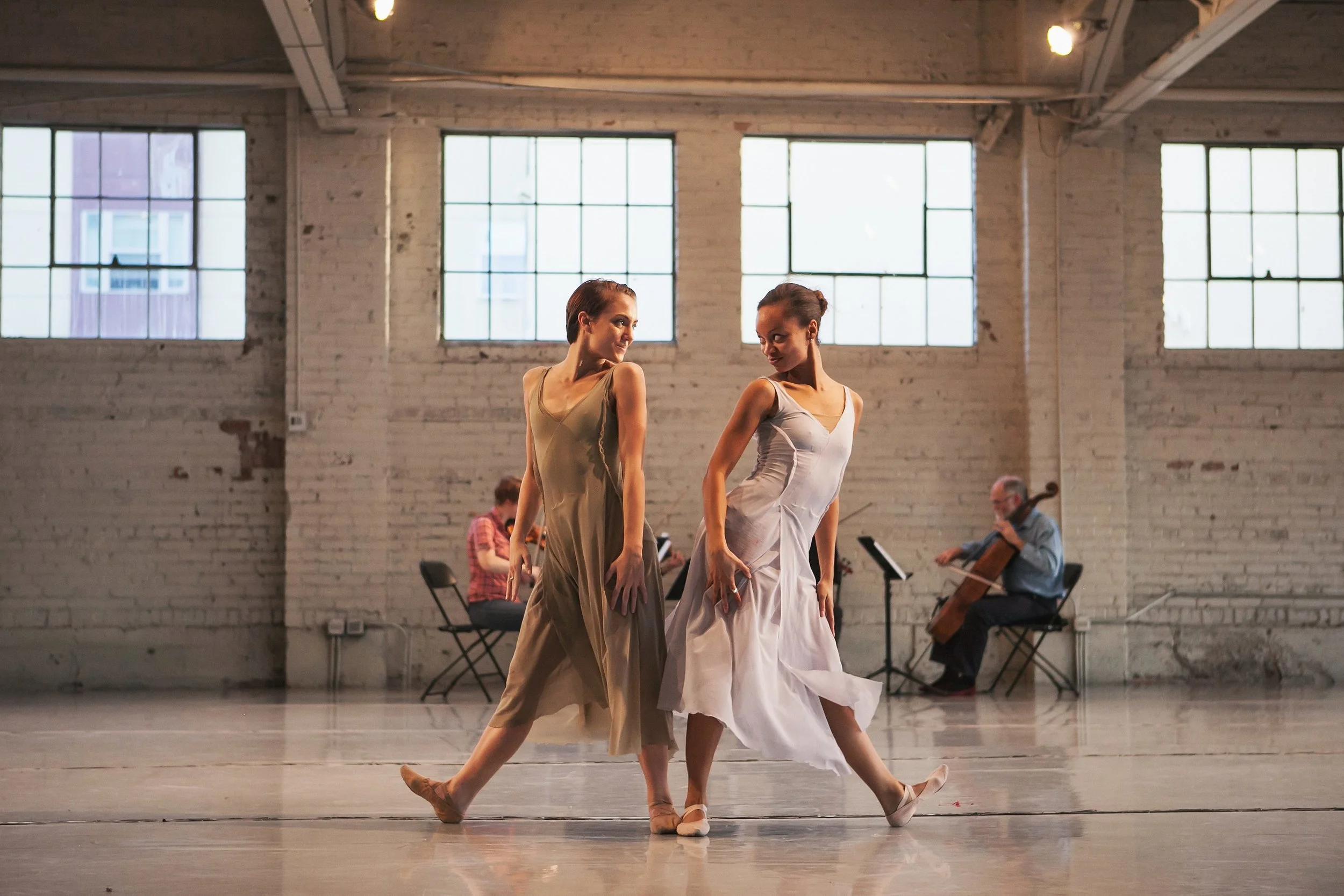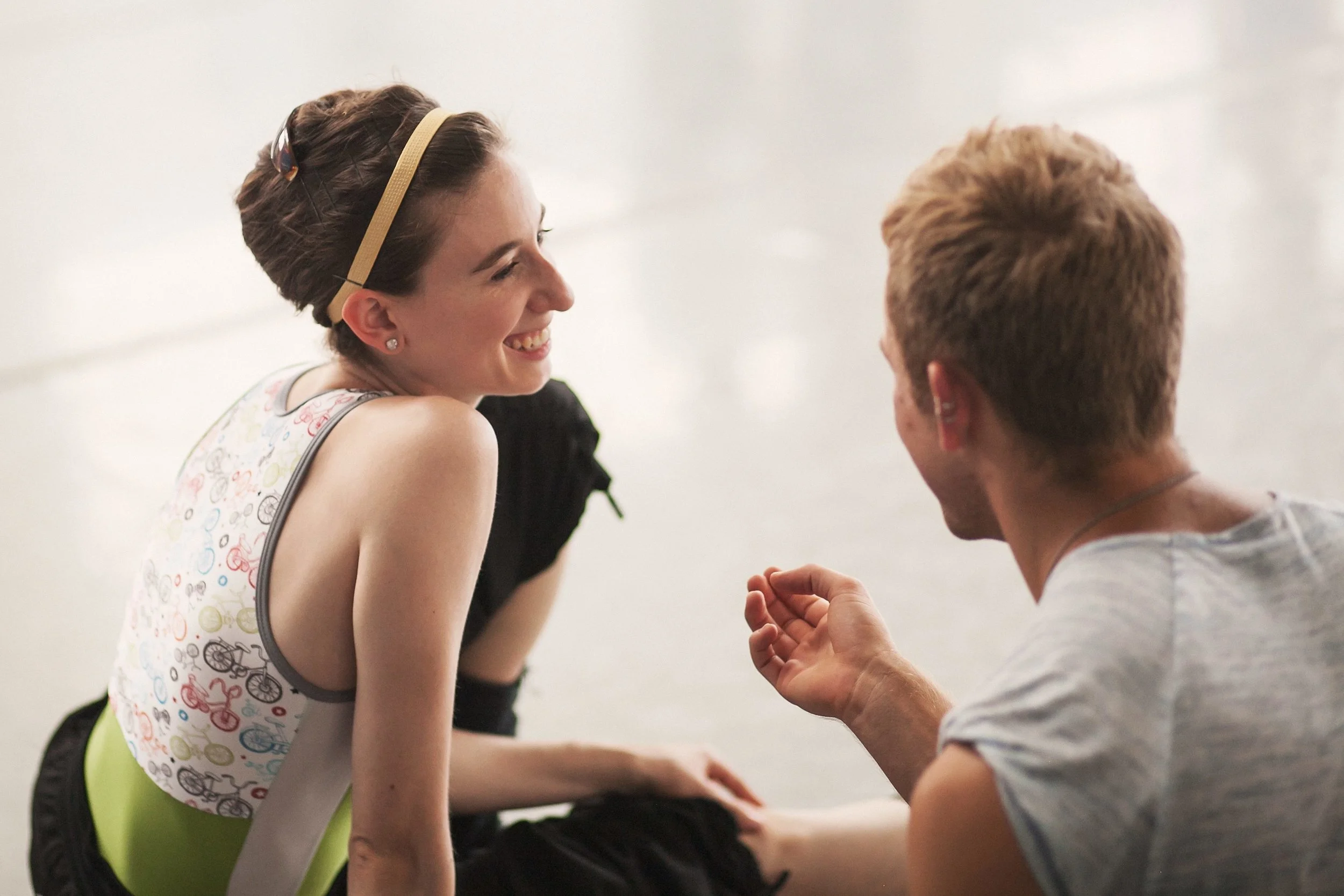An Uberfan's Guide to Wonderbound
Traditionally the performing arts, including theatre, ballet, classical music, and opera, have insisted on a rather mysterious and strict set of rules which must be adhered to lest you embarrass yourself as an audience member. There is pressure on attendees to know when and how it is appropriate to react and when you are meant to sit still and be quiet. This can be stressful for people who aren’t familiar with the customs and norms, and might even mean some people opt to stay home instead of showing up within the confines of the formalities.
But you may have noticed that things are done a bit differently at Wonderbound: They invite you to be engaged and involved. Are you familiar with the “fourth wall,” the imagined, artificial barrier between audience and performer? At Wonderbound, the fourth wall is porous by design.
Your presence and participation help make the show come alive, creating a feedback loop with the dancers and musicians. From the artists’ perspective, each performance is different—partly due to the composition and the mood of the audience. Wonderbound believes that audience involvement is essential and adds to the vitality of their shows. Your reactions and responses give energy back to the dancers, musicians, and technical team, letting them know you “get” what they’re doing and are enjoying the ride.
When you choose to engage with Wonderbound, you may experience heroines battling space aliens, amorous and deadly encounters on an animated green sofa, heart-wrenching scenes of loss and despair, raucous hip-hop anthems—the sky’s the limit—plenty of reasons to cheer, laugh or gasp out loud, sing along, and maybe wipe a tear or two. You could even find yourself onstage dancing at a wedding.
Wonderbound invites you to be fully immersed and enjoy the show—whatever that means for you. No need to be shy or hold back. Feel free to applaud whenever the mood strikes you—there is no wrong time to clap during a Wonderbound show! Just do it with gusto and you’ll find others will be eager to join in.
For a performer, there may be no better moment than basking in the applause of an enthusiastic audience after giving their all to a performance. Artists are deeply grateful for the love and gratitude bestowed upon them by generous audiences. Especially at curtain call, feel free to express your feelings about the performance through applause, whistles, and cheers (bravo!).
What else?
Be punctual. This one goes without saying, but just in case. You won’t want to disturb others or miss the beginning of the show!
Phones off. ‘Nuff said.
No photography or recording, please. During the show, this can be dangerous for the dancers and is distracting to others.
Come prepared. Attend the teaser performance or a rehearsal at the studio (always open and free!) ahead of the show. You’ll get a sneak preview and have some “insider” perspective to make the show even more fun.
Express your style. Dress up or wear your jeans—whatever feels comfortable.
Make an evening of it. Wonderbound audiences often enjoy dining or imbibing in happy hour before the show. Each performance venue has different guidelines around in-house refreshments, so check with them if you’re curious about what will be available to you.
Bring your friends. Why keep this experience to yourself? Share the love and bring everyone along. One caveat: little ones may have trouble sitting through a performance, and parents may find some content not entirely suitable for youngsters. Feel free to call and ask questions if you’re wondering about a specific show.
Be social. Post, snap, share, tweet!
Buy music. Wonderbound shows always feature live music, and the artists often have recordings available for purchase in the lobby. Show your support for independent music and take an echo of the show home with you!
Subscribe or contribute. Your ticket purchases and generous support allow Wonderbound to continue to make the art we so enjoy.
Stay after. The dancers love to meet the audience and will come out to say “hello” after the performance. And it’s also fun mingling with other audience members and getting to know each other, as well.
Did You Know?
The earliest Greek audiences for dramatic performances gathered around festivals and celebrations—they were interactive and lively! Hissing and stone throwing could ensue if the audience didn’t like the show, and “bouncers” patrolled the aisles with sticks to keep rowdies in line.
Traditional Asian audiences were accustomed to commit to consuming their art over a serious duration: Japanese plays and Chinese operas could last for several days.
Elizabethan/Shakespearean audiences would often talk back to the actors through the entire performance.
During the Restoration period, theater performances were largely about wealthy patrons in the audience being seen by one another (versus focusing on the show). It was after this time that theatre lighting changed to focus on what was happening onstage by dimming the house lights, leaving the audience in the dark.
If early ballet audiences insisted on an encore, the entire performance might be given a second time!












